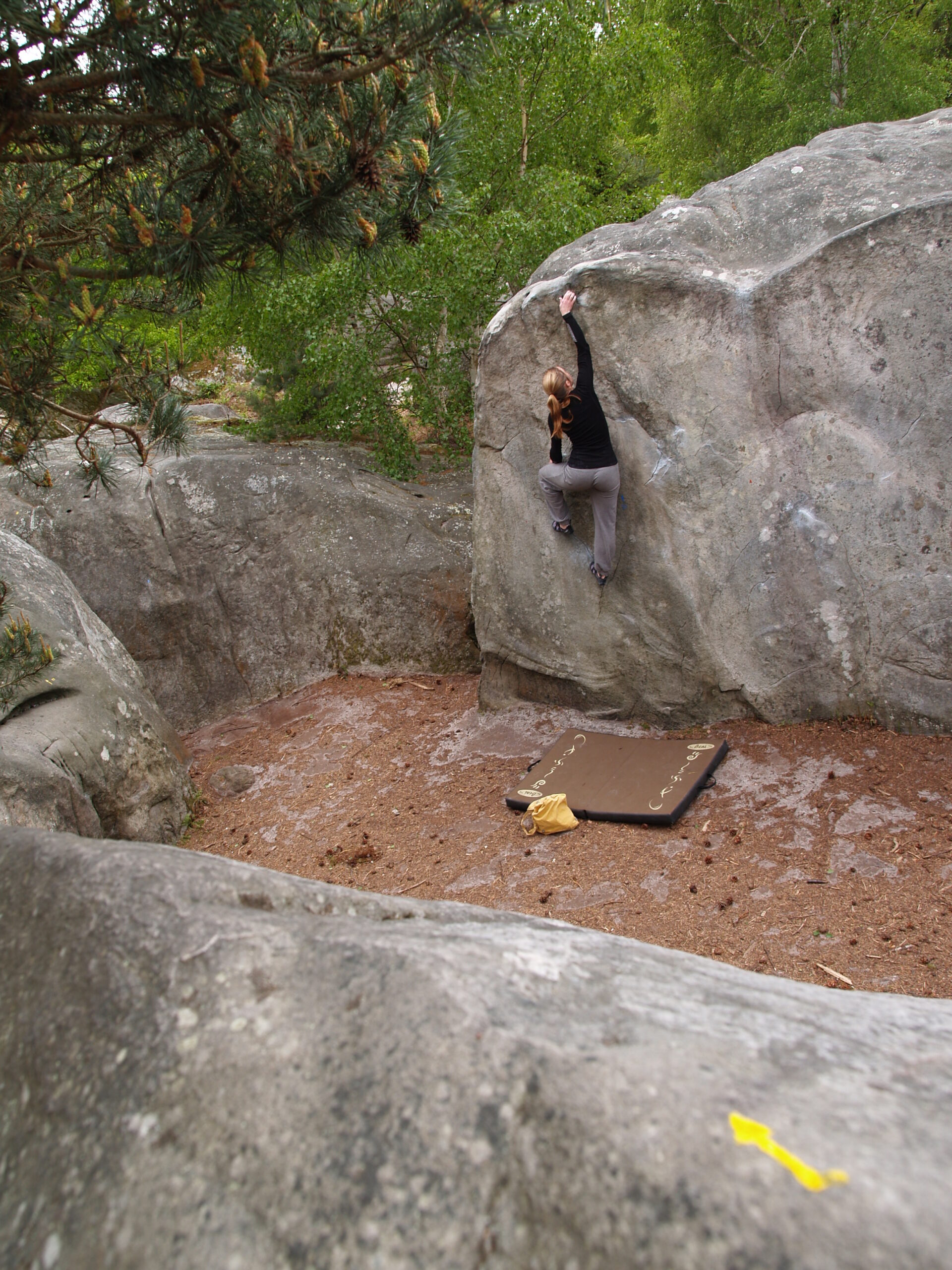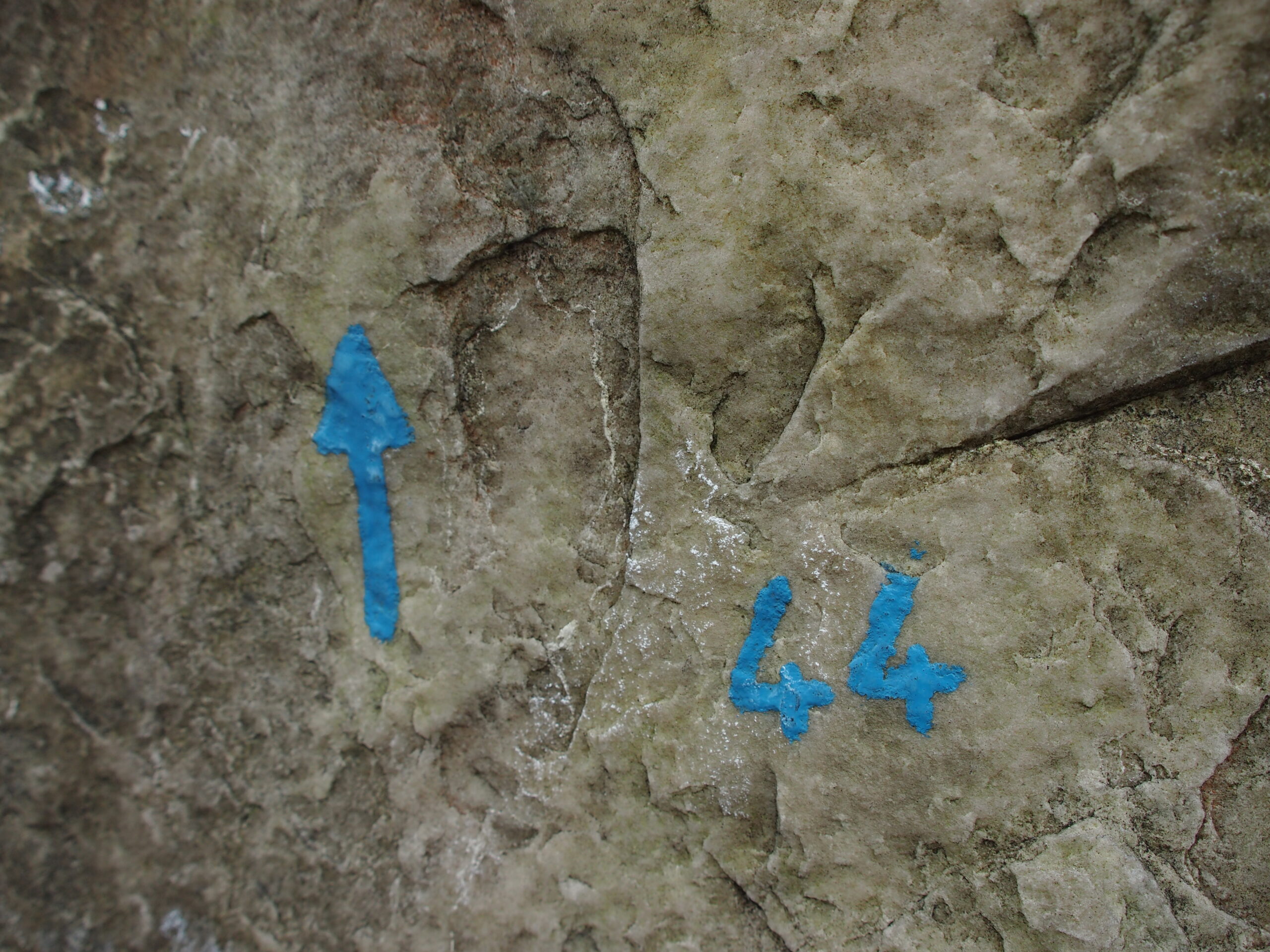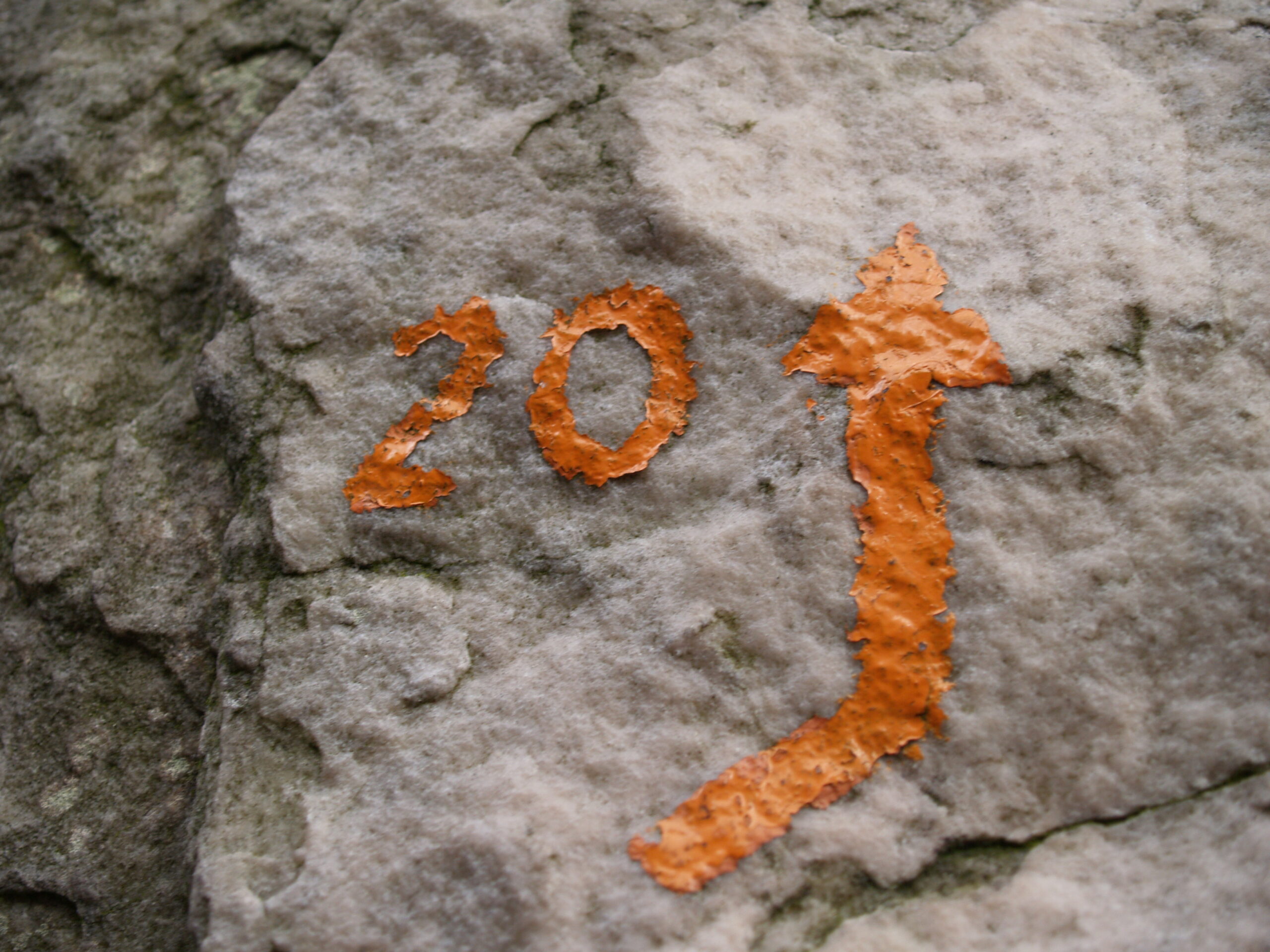Bouldering has grown from its outdoor roots into a popular indoor sport, initially serving as training for alpine climbs before evolving to focus on conquering challenging routes and appreciating the elegance of climbing movements. For those drawn to the sport’s origins and seeking natural beauty beyond the indoor gym, the Fontainebleau forest offers a wealth of climbing experiences. This area, known as the world’s bouldering mecca, is steeped in history and filled with routes marked by colorful arrows, guiding climbers through circuits of varying difficulties. Fontainebleau’s rich climbing culture, highlighted by famous routes and comprehensive guidebooks, ensures climbers of all levels can explore and challenge themselves amidst its scenic landscapes.
Bouldermekka of the world
Located 50 kilometers south of Paris, the Fontainebleau forest is renowned as the global bouldering mecca. It’s unique for hosting thousands of boulders that offer an extensive array of perfect routes for enthusiasts. The central town of Fontainebleau, complete with its historic castle, restaurants, and bars, is surrounded by quaint villages like Barbizon, celebrated in art history. These forests, often hilly, are divided into about 100 sub-areas teeming with boulders, making it a climber’s paradise. For detailed exploration, bleau.info provides comprehensive maps.
Circuits of boulders with comparable grades
In Fontainebleau’s bouldering areas, colored arrows guide climbers through various routes, connecting boulders of the same difficulty in circuits that are often numbered. Additional markers, like dots on rocks, suggest starting points or directions. While traditional circuits offer a structured climbing experience, many climbers now tackle boulders individually, using crash pads for safety. Among these, children’s circuits present an accessible option with lower blocks and easier grades, distinct from the more challenging climbs found in indoor facilities.



First ascents and boulder route names.
In the 1930s, Fontainebleau locals, known as ‘Bleausards’, began documenting their climbs, leading to the naming of routes and boulders, especially from the fifth degree upwards. These names, such as the iconic “Marie Rose” first climbed by René Ferlet in 1946, hold significant recognition within the climbing community. The tradition of naming allows climbers to easily identify and share information about specific challenges, including through online platforms like YouTube or Bleau.info, where guides on tackling these routes are readily available.
Guidebooks
A wide array of guidebooks, also known as topo’s, catalog the diverse bouldering routes of Fontainebleau, organized by specific areas, difficulty levels, and notable circuits due to the sheer volume of routes available.
Guidebooks are essential for navigating the area’s vast climbing options. They are available for purchase in bouldering halls, online, or at local campsites around Fontainebleau.
Rules for climbing a boulder
In Fontainebleau, completing a climb means standing on top of the boulder. Always plan your descent before starting. Climbing begins typically from a standing position, but some routes specify sitting or lying starts, as detailed in the guidebook (topo). It will also indicate specific grips to use. Climbs should be approached statically, without jump starts unless explicitly allowed.
Crash pads and spotting
Falling outdoors while bouldering differs from indoor falls, requiring a crash pad for safety. Proper positioning of the crash pad is crucial to avoid injury from falling on rocks or tree stumps. When climbing with others, it’s important to have spotters who help ensure the climber lands on the pad correctly, guiding them by pushing if necessary, but not catching them directly. This approach maximizes safety during outdoor bouldering sessions.
The best season
Choosing the right time for bouldering is crucial for optimal performance, much like selecting fitting climbing shoes. The best grip often comes in colder conditions, making autumn, winter, and spring ideal for bouldering in Fontainebleau, as summer conditions aren’t optimal for peak performance. However, summer is recommended for those seeking good weather and a pleasant outdoor experience.
Bouldering in or after the rain
To put it simply, climbing on wet rocks is not possible. Wet conditions make the rocks slippery, which is hazardous and harmful to the rock itself. Moisture increases the likelihood of handholds and footholds breaking off, leading to quicker erosion of the rock. Guidebooks often note which areas dry quickly, usually those exposed to sun and wind, not in dense forests but on open hilltops. It’s essential to wait until the rock is completely dry before bouldering to protect both the climber and the environment. If you observe people climbing on wet rocks, it’s advisable to inform them of the risks.
Rules and regulations. Outside is not a boulderinggym, protect the outdoor climbing area’s at all costs.
As an outdoor climber, it’s crucial to behave respectfully and leave minimal traces behind, ensuring areas remain enjoyable for future use. Climbing zones, often in protected or private areas, allow climbing with the consent of owners or managers, which can be revoked if disturbances occur. Fontainebleau, a protected Natura 2000 area, has specific regulations to preserve its natural state.
An up to date overview of the ethics and official rules can be found on www.fontainebleaurules.com. Please read that page before your visit.
Campsites
There are various campgrounds around Fontainebleau, popular among boulderers, with some requiring reservations during holiday weekends. Campsites like Camping Les Prés in Grez-sur-Loing offer spacious spots for caravans and tents, located south of most areas. Camping La Musardière in Milly-la-Forêt features a swimming pool and rental cabins, within walking distance to some areas. Camping l’Ile de Boulancourt offers riverside camping with the option to make fires, heated sanitation facilities, and a meeting room with a kitchen, though it’s a bit further from climbing sites.
Bivouacs and campervans
Wild camping or spending the night in a camper on a parking lot in the forest is prohibited (Fontainebleau is a protected nature reserve). There are three ‘Bivouacs’ where you can pitch your tent for one night (intended for hikers). These bivouacs do not have toilet facilities. Parking campers in the parking lots near these bivouacs seems to have been tolerated for the time being.
If you have a campervan, bring your own toilet(box) or use public toilets in the villages. Keep the surroundings of the bivouac parkings as clean as possible, so we can enjoy them while it lasts!
– Bivouac à la Faisanderie de Fontainebleau – New bivouac field at Fontainebleau for max. 20 tents (unknown whether there is also room for campers). Water point available.
– Bivouac de la Grande Vallée near Bouronn-Marlotte – Space for tents (max. 20). Water point available.
– Bivouac de la Solle – Parking at Fontainebleau horse racing track. Space for tents (max. 20). Water point available?
Campers/campervans also park in the parking spaces in front of the entrance to the racecourse and immediately to the right before the start of the racecourse itself.
More information about the ‘Bivouacs’ and an up-to-date description of the campervan situation can be found on www.fontainebleaurules.com .
Do you prefer houses?
Check out AirBnB and Gites de France
Supermarkets
Central – Monoprix Fontainebleau (medium)
North – Center commercial Villiers-en-Bière – Carrefour (gigantic)
West – Intermarché Super Oncy-sur-École (large)
South – Intermarché Super Nemours (large)
Useful links
Website with all boulders www.bleau.info
Climbing shop in Fontainebleau www.scape-shop.com
Decathlon (climbing shop) in Center commercial Villiers-en-Bière (no topos) www.decathlon.fr
Mega bouldering hall Karma in Fontainebleau (useful if it’s raining) www.karma.ffme.fr
Questions or an update of information? Mail to: joost@keiboulderhal.nl
Last update: 06-02-2024
